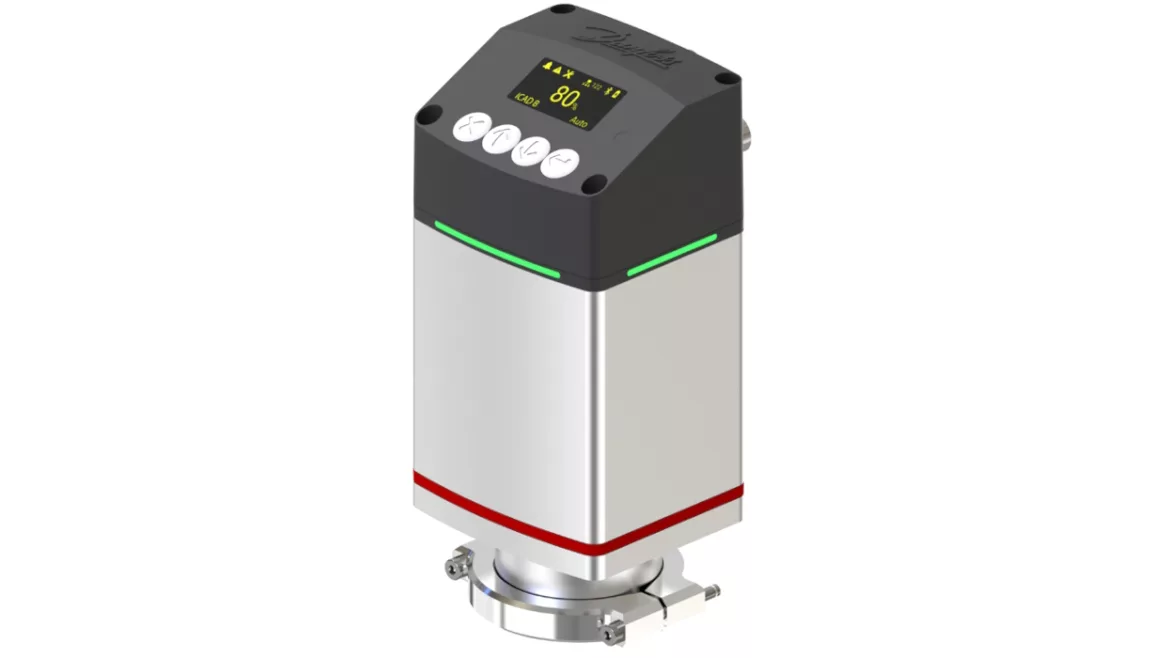Control Solutions
Next-Level Connectivity for Industrial Refrigeration

Image courtesy of Danfoss
Danfoss is introducing its new ICAD B with the intent of taking motorized valves control and connectivity to a new level. Engineered for a range of applications, the company says its well-known actuator ICAD is taking a big step toward digital integration, enhanced user experience and higher reliability.
The ICAD B is designed to reduce complexity and increase connectivity, enabling professionals to see industrial refrigeration in a new light. Dedicated to easy setup, trouble-free operations and real-time monitoring, the company says its new actuator eases workflows while the wireless interface offers remote control and adjustment, eliminating the need to climb the valve. And because it is fully backward-compatible, the ICAD B seamlessly replaces the current ICAD A.
To meet all operational needs, the ICAD B is available in a series of four variants: RS485 with display, Ethernet with display, RS485 without display and Ethernet without display.
Overall features and benefits of the ICAD B include:
- Quick setup function to save time
- Smartphone app control via Bluetooth
- Easy operation with a larger display and intuitive, descriptive menu
- Self-diagnostics and remote monitoring, ensuring no downtime
- Multiple interfaces for easier setup and adjustment of parameters
- Enhanced operating logic designed for outstanding reliability on the most challenging conditions
- Real-time monitoring and control via data communication
- New mounting design for easier mounting
- Forward compatibility with software-based updates providing the latest features and functionalities
- Extensive testing and validation in laboratory and field test conditions to ensure trouble-free operation
Looking for a reprint of this article?
From high-res PDFs to custom plaques, order your copy today!








